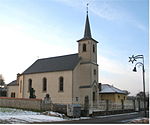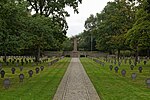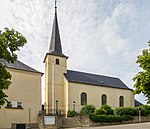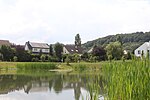Contern

Contern (Luxembourgish: Conter [ˈkontɐ] ) is a commune and town in southern Luxembourg. It is located east of Luxembourg City.As of 2023, the town of Contern, which lies in the south-west of the commune, has a population of 1,836.The main towns are Contern, Moutfort, Oetrange and Medingen and Milbech. Additionally the commune contains the Lieu-dits of Bricherhaff, Brichermillen, Kréintgeshaff, Kackerterhaff, Marxeknupp and Pleitrange.The commune also contains the industrial zones of Chaux de Contern, and Rosswenkel, as well as the activity zone of Weiergewan. The town hall was formerly situated among these industrial zones prior to the redesign of the area. Intersections became roundabouts, roads were repaved, and the railway station, Sandweiler-Contern was completely rebuilt in a new location in December 2015 for easier access from the main road in the Industrial Zone. The new town hall was built next to the church on the hill around the centre of the town.
Excerpt from the Wikipedia article Contern (License: CC BY-SA 3.0, Authors, Images).Contern
Rue de Moutfort,
Geographical coordinates (GPS) Address Nearby Places Show on map
Geographical coordinates (GPS)
| Latitude | Longitude |
|---|---|
| N 49.5847 ° | E 6.2264 ° |
Address
Rue de Moutfort
5310
Luxembourg
Open on Google Maps











